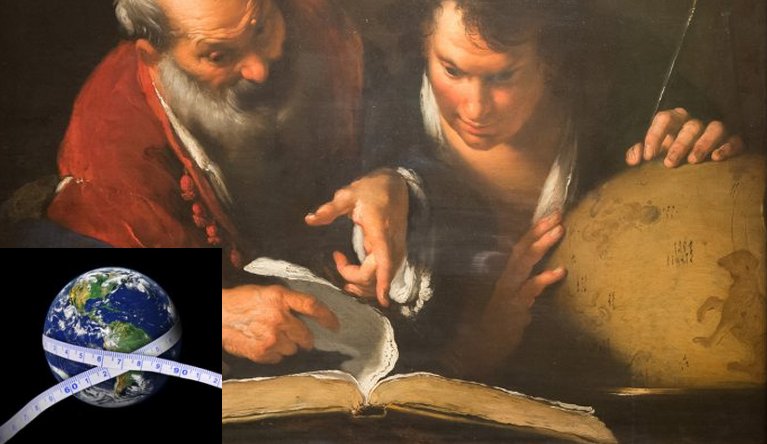How Ancient Scientists Calculated The Circumference Of The Earth
Cynthia McKanzie - AncientPages.com - Without access to modern technology, calculating the circumference of the Earth in ancient times was by no means an easy task.
Yet, two ancient scientists are today famous for their attempts and they almost got the numbers right, almost. It should be added that one miscalculation led to Columbus's discovery of America. So, how did ancient scholars measure the size of the Earth?
Eratosthenes Of Cyrene Calculated The Circumference Of The Earth Using A Gnomon And Counting How Long A Camel Walked In A Day
Born in Cyrene which is now in Libya in North Africa, Eratosthenes Of Cyrene (276 BC – c. 195/194 BC) was a Greek mathematician, geographer, astronomer and historian.
As man with great scientific curiosity, Eratosthenes Of Cyrene later became the chief librarian at the Library of Alexandria in Egypt. It is believed that he starved himself to death in 195 B.C.E. because he became blind and could no longer work.
Eratosthenes Of Cyrene made the first measurement of the size of Earth using a gnomon, an ancient time measuring instrument that cast a shadow. It was probably the first device for indicating the time of day dating from about 3500 B.C. The length of the shadow this simple instrument cast, it gave an indication of the time of day.
A simple astronomic instrument, the 'gnomon' used to calculate the time, season, and so on) is composed of a vertical gnomon and a horizontal ruler. Image: Cultural Chin
To calculate the circumference of the Earth, Eratosthenes measured the angle of the shadow to the Earth. He had had previously determined that on June 21, the date of the summer solstice, the Sun cast no shadow at the bottom of a water well located in Cyrene (also spelled "Gyrene"). Therefore, he knew that on this date and at this point, the Sun was at its zenith.
Eratosthenes measured the angle of the shadow at the column and calculated the circumference of the Earth using the difference between the two locations. Image credit: GCSSE Astronomy
Cyrene placed a stick (gnomon) in the ground at a location in the city of Alexandria, which he knew was 5,000 stadia from Cyrene . And measured the angle of the shadow. Knowing how many stadia a camel could walk in a day, Eratosthenes estimated the distance between the two cities by multiplying the distance a camel walked in one day by the number of days it took a camel caravan to make the journey
He found the circumference of the Earth to be nearly 250,000 stadia (25,000 miles). His calculation was very close to today's accepted equatorial circumference of 24,902 miles.
See also:
Ancient Greeks Invented Alarm Clocks
First Odometer Was Invented By Vitruvius Around 15 B.C.
Posidonius Miscalculation Led To Columbus' Discovery Of America
Posidonius of Rhodes is also known as Posidonius of Apameia (c. 135 BCE – c. 51 BCE), was a Greek politician, astronomer, geographer, historian and teacher who was considered the most-learned man of his time.
Posidonius attempted to calculate the circumference of the Earth by assuming the cities of Rhodes (Greece) and Alexandria (Egypt) were on the same meridian. He also thought that the star Canopus touched the horizon at Rhodes at a meridian altitude of 7 30' or V48 of the circumference of a circle at Alexandria. The distance between these two cities was 5,000 stadia. By multiplying 48 by 5,000, he figured the Earth's circumference to be 240,000 stadia, which was close to Eratosthenes' figure and Posidonius almost got the numbers right, but he was too ambitious. For some reason, recalculated the distance between Rhodes and Alexandria and decreased the figure to 180,000 stadia.
Image credit: Ms. Apolonio, Slide Share
Claudius Ptolemy, a Greek writer, known as a mathematician, astronomer, geographer wrote about Earth’s circumference in his works, and he based his material on Posidonius’ research.
When Christopher Columbus used more than 1,000 years later was on his journey to Asia, the error not only made his voyage much longer, but it also but led him to his discovery of the Americas.
The Earth Is Not A Perfect Sphere
Today we know that our Earth is not a perfect sphere and it has a weird shape because the Earth’s gravity isn’t uniform. A while back, scientists presented the most accurate map ever produced of the Earth’s gravity. The map is called a geoid, the result of two years of orbital surveys by the European Space Agency (ESA) Gravity Field and Steady-State Ocean Circulation Explorer (GOCE) satellite that also studies ocean circulation and the movement of ice.
The map clearly shows that Earth’s equatorial circumference is greater than its polar circumference.
Modern scientists have learned much about the shape and size of our planet, but ancient attempts to gain similar information were quite successful too.
Written by Cynthia McKanzie - AncientPages.com Staff Writer
Copyright © AncientPages.com All rights reserved. This material may not be published, broadcast, rewritten or redistributed in whole or part without the express written permission of AncientPages.com
Expand for referencesMore From Ancient Pages
-
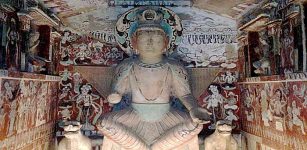 Mogao Grottoes, Dunhuang, China – Fascinating Statues, Manuscripts And Wall Paintings
Featured Stories | Dec 15, 2015
Mogao Grottoes, Dunhuang, China – Fascinating Statues, Manuscripts And Wall Paintings
Featured Stories | Dec 15, 2015 -
 More Than 1,000 Prehistoric Burial Mounds Discovered In The Netherlands
Archaeology | Jan 26, 2023
More Than 1,000 Prehistoric Burial Mounds Discovered In The Netherlands
Archaeology | Jan 26, 2023 -
 On This Day In History: Amelia Earhart, Most Famous Female Pilot – Disappeared Over The Pacific Ocean – On July 2, 1937
News | Jul 2, 2016
On This Day In History: Amelia Earhart, Most Famous Female Pilot – Disappeared Over The Pacific Ocean – On July 2, 1937
News | Jul 2, 2016 -
 On This Day In History: ‘The Wars Of The Roses’ – Fighting For The Throne Of England At Tewkesbury – On May 4, 1471
News | May 4, 2016
On This Day In History: ‘The Wars Of The Roses’ – Fighting For The Throne Of England At Tewkesbury – On May 4, 1471
News | May 4, 2016 -
 Mead: Secret Drink Of The Vikings And Gods – Was It An Ancient Antibiotic?
News | Feb 21, 2016
Mead: Secret Drink Of The Vikings And Gods – Was It An Ancient Antibiotic?
News | Feb 21, 2016 -
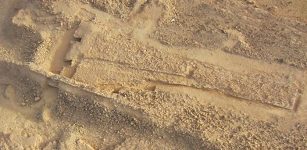 A 35 Meter-Long Stone Platform Dated To 6,000 BC Discovered In Saudi Arabia
Archaeology | Jul 11, 2020
A 35 Meter-Long Stone Platform Dated To 6,000 BC Discovered In Saudi Arabia
Archaeology | Jul 11, 2020 -
 Shepherd’s Monument Mystery: Yet Another Undeciphered Inscription
Featured Stories | Jun 26, 2023
Shepherd’s Monument Mystery: Yet Another Undeciphered Inscription
Featured Stories | Jun 26, 2023 -
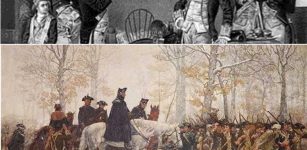 On This Day In History: American General Benedict Arnold Commits Treason – On Sep 21, 1780
News | Sep 21, 2015
On This Day In History: American General Benedict Arnold Commits Treason – On Sep 21, 1780
News | Sep 21, 2015 -
 Afterlife: Ancient Egyptian Mummification Balms Studied
Archaeology | Aug 31, 2023
Afterlife: Ancient Egyptian Mummification Balms Studied
Archaeology | Aug 31, 2023 -
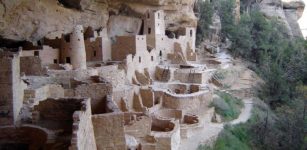 Sophisticated Masonry In Anasazi Dwelling Ruins At Mesa Verde National Park, Colorado, USA
Civilizations | Aug 11, 2015
Sophisticated Masonry In Anasazi Dwelling Ruins At Mesa Verde National Park, Colorado, USA
Civilizations | Aug 11, 2015 -
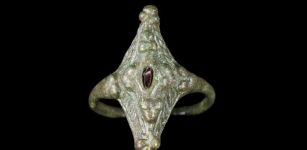 Extraordinary Kite-Shaped Pictish Ring Found At Moray Fort In Scotland
Archaeology | Sep 5, 2024
Extraordinary Kite-Shaped Pictish Ring Found At Moray Fort In Scotland
Archaeology | Sep 5, 2024 -
 Mystery Of The Real Sword: How Did A Meter Long Sword End Up In Solid Rock?
Artifacts | Apr 15, 2019
Mystery Of The Real Sword: How Did A Meter Long Sword End Up In Solid Rock?
Artifacts | Apr 15, 2019 -
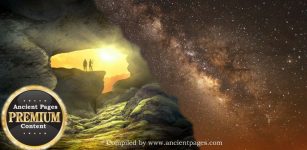 Mysterious Ancient Lost Civilization Of North America Had Interest In One Particular Constellation
Ancient Mysteries | Apr 17, 2018
Mysterious Ancient Lost Civilization Of North America Had Interest In One Particular Constellation
Ancient Mysteries | Apr 17, 2018 -
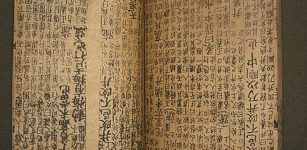 I Ching – The Book of Changes – World’s Oldest Book Of Wisdom Used To Predict Future Events
Featured Stories | Sep 12, 2018
I Ching – The Book of Changes – World’s Oldest Book Of Wisdom Used To Predict Future Events
Featured Stories | Sep 12, 2018 -
 11 Reconstructions Of Ancient Cities, Monuments And Sacred Sites
Civilizations | Jun 25, 2024
11 Reconstructions Of Ancient Cities, Monuments And Sacred Sites
Civilizations | Jun 25, 2024 -
 Why Is Caganer, The Pooping Man Part Of The Catalonian Christmas Tradition And Nativity Scene?
Christmas Traditions | Dec 18, 2024
Why Is Caganer, The Pooping Man Part Of The Catalonian Christmas Tradition And Nativity Scene?
Christmas Traditions | Dec 18, 2024 -
 Ancient Oil Lamp Shop Discovered In Aizanoi, The Second Ephesus
Archaeology | Nov 22, 2021
Ancient Oil Lamp Shop Discovered In Aizanoi, The Second Ephesus
Archaeology | Nov 22, 2021 -
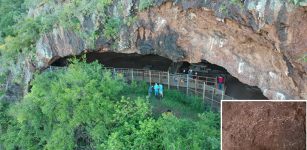 200,000-Year-Old Grass Bed Discovered In South Africa’s Border Cave
Archaeology | Aug 14, 2020
200,000-Year-Old Grass Bed Discovered In South Africa’s Border Cave
Archaeology | Aug 14, 2020 -
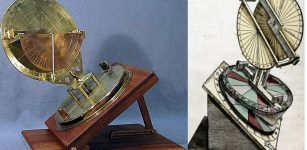 Torquetum: Sophisticated Medieval Astronomical Instrument
Ancient History Facts | Jul 12, 2018
Torquetum: Sophisticated Medieval Astronomical Instrument
Ancient History Facts | Jul 12, 2018 -
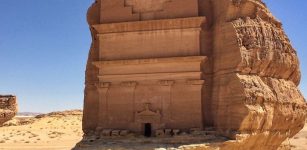 Mada’in Saleh: Magnificent Timeless Rock-Cut Tombs And Monuments In The Desert
Civilizations | Oct 30, 2018
Mada’in Saleh: Magnificent Timeless Rock-Cut Tombs And Monuments In The Desert
Civilizations | Oct 30, 2018

